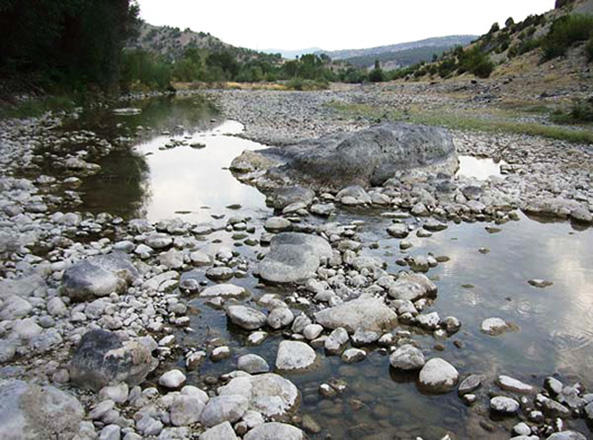Armenia polluted transborder, internal rivers as part of 30-year ecoterrorism

By Vugar Khalilov
A hydrometeorological research center official has said that Armenia polluted transboundary and internal rivers during its 30-year occupation of Azerbaijani territories, Trend reported on October 6.
"Samples taken from rivers are analyzed in laboratories. Currently, there are no significant changes in our rivers compared to previous years. The situation varies by season. For example, if in summer, due to lack of water, the impact of waste discharged into the river is large, during periods of high water these effects decrease," the head of the National Hydrometeorological Service's Hydrometeorological Research Centre under the Ecology and Natural Resources Ministry, Rafig Verdiyev, said.
Commenting on the quality of water in the transboundary rivers in the liberated lands, Verdiyev underlined that the monitoring system is being repaired in those areas and constant control is carried out.
"Our rivers, which flow through the territory of Armenia, are most susceptible to pollution. The concentration of toxic waste in these rivers is higher. We also have become acquainted with the data of Armenian sources. Various reports emphasize that rivers are so susceptible to pollution by waste from factories in Armenian territory that they are already unsuitable for irrigation. This is an extremely difficult case,” he stressed.
Speaking about the threats posed by polluted water to human health, Verdiyev noted that Azerbaijan is taking measures to eliminate these negative factors.
“The high concentration of toxic elements in water poses a serious danger to human health. Azerbaijan is taking measures to prevent these actions by Armenia. This issue is included in international reports and covered in various projects related to water. Currently, certain international organizations are implementing projects to improve water quality in Azerbaijan, Georgia and Armenia. Armenia is also required to ensure water quality. I believe that these projects can somehow affect the existing problem," Verdiyev underlined.
He noted that within some period Azerbaijan can bring the quality of water to the previous standards that existed before the Armenian occupation of these lands.
“During the monitoring, we see that the level of pollution of local rivers on the liberated territories is higher than the norm. This, of course, is associated with the inefficient use of natural resources for many years and the dumping of harmful substances and waste into rivers. I believe that over time we will be able to achieve the return of the rivers to the state that was before the occupation and to ensure their compliance with the necessary standards," Verdiyev added.
Armenia’s three-decade occupation of Azerbaijani territories extensively damaged the ecosystem, wildlife and natural resources in and around the Karabakh region. Armenians resorted to large-scale acts of ecological terror in the regions they had to leave under the trilateral November peace deal that stipulated the return of Azerbaijan’s occupied territories.
The clashes between Armenia and Azerbaijan escalated for the second time in 2020 after Armenia's forces deployed in the occupied Azerbaijani lands targeted Azerbaijani civilian settlements and military positions, causing casualties among civilians and the military. In the early hours of September 27, Azerbaijan launched a counter-offensive operation that lasted six weeks. The operation resulted in the liberation of Azerbaijan's occupied lands.
A Russia-brokered ceasefire deal that Azerbaijan and Armenia signed on November 10, 2020, brought an end to the 44-day war between the two countries. The Azerbaijani army declared a victory against the Armenian troops. The signed agreement obliged Armenia to withdraw its troops from the Azerbaijani lands that it had occupied.
--
Follow us on Twitter @AzerNewsAz
Here we are to serve you with news right now. It does not cost much, but worth your attention.
Choose to support open, independent, quality journalism and subscribe on a monthly basis.
By subscribing to our online newspaper, you can have full digital access to all news, analysis, and much more.
You can also follow AzerNEWS on Twitter @AzerNewsAz or Facebook @AzerNewsNewspaper
Thank you!
